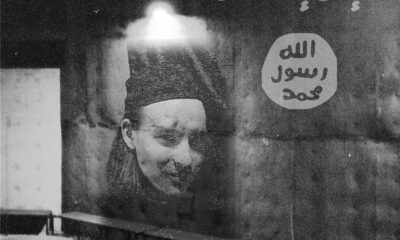News
NIC’s medical assistant program ranks highest in nation
The medical assistant program is a well-kept secret gem at NIC. It is small, but thriving, according to the program director and instructor, Cindy Pavel.
The American Association of Medical Assistants agrees. The medical assistant exam tests three main areas: general knowledge, clinical and administrative. Pavel had 15 students take the test, and their averages were 80 percent for general knowledge, 83 percent for administrative and 83 percent for clinical, while the national averages were, correspondingly 65, 64 and 67 percent.
“But it’s not just one year that that happened,” Pavel said. “It’s consistent.”
The national exam is different every year. But NIC’s medical assistant students’ ranking is not. Their grades remain consistently above average, according to the American Association of Medical Assistants. In fact, the grade averages for first-time test takers at NIC are even better than the second-time test takers in the nation.
NIC’s average scale score is 663, which leaves students in the 99th percentile on a scale of one to 640.
And since Pavel’s program is small, that means even one failed test can make a big dent in the grade average, which also means that 100 percent of her students passed the exam.
“But it’s not just about passing the test,” Pavel said.
NIC’s medical assistant program is accredited by the Higher Learning Commission. And to participate in the Commission, Pavel must publish her results, but instead of only publishing her students’ test scores, Pavel chose to publish employer’s satisfaction, which was 100 percent, as well as student satisfaction with the program, which was also at 100 percent. Pavel said that it is employer and student satisfaction that gives the program just as much credit as the high test scores.
Pavel said that it is the employer satisfaction ranking that lets future employers know that current and past employers are happy with her students.
“It’s like, everyone who gets out of the program has a job waiting for them,” said Chris Green, Student Success Navigator, ICE Healthcare Partnership, TAACCCT IV Health Professions and Nursing. “And that’s rare these days.”
Green said he likes the medical assistant program because it is short and gets students in a doctor’s office and working with patients soon after completion. And since working with patients is the medical assistant’s primary job, they get to know them well.
“You tend to get more time with the medical assistant, so you almost get to know your medical assistant more than you do your doctor,” Green said.
It takes 11 months to complete the program with a certification. Students may also decide to go on to get their associates after obtaining the certificate. Medical assistants are paid more than certified nursing assistants, but not as much as nurses. They work in tandem with doctors, but not independently from them.
A medical assistant works with the patients by getting their pulse, blood pressure and temperature. They also directly relay the patient’s needs before the doctor sees them, among other things. And the job outlook is looking up with wages ranging from $23,000 to $45,000.
Pavel said it makes for a great second-salary career. It also allows for practitioners to be around when their kids need them in the evenings.
“This tends to be a really good career for somebody, especially like a single mom,” Pavel said.
Medical assistants work during the day so they don’t have night hours and get home by five or six in the evening. They don’t typically work weekends unless the office is open on weekends.
The program is also a gateway to other medical professional jobs in the healthcare industry such as nursing, patient care, physician or physician’s assistant. Assistants may also decide that they prefer the patient record keeping as opposed to the patient care aspect of the job.
“It’s kind of the hub for healthcare professionals,” Green said. “So you get to this wide spectrum of different experiences, and that can really direct you on where to go, who to see– which profession, rather, fits you best.”
“So, it can either be that launch board for further careers, or it can be your future,” he said.
The program recently received a portion of a record-breaking grant to help upgrade and modify the program with cutting edge technology and equipment.
The $6,438,050, four-year grant eclipses the $2.97 million grant that NIC received in 2012 to build the NIC Aerospace Center for Excellence, making it the largest grant in NIC’s history. NIC was the only college in Idaho to be awarded funding from the Trade Adjustment Assistance Community College and Career Training (TAACCCT) competitive grant program, which is co-administered by the U.S. Department of Labor and the U.S. Department of Education.
With help from the grant, NIC can now offer the medical assistant program to students almost anywhere by providing all the necessary classes online. The college has tailored the program to fit the needs of long-distance students by scheduling all the labs for only one day of the week so that students from farther away only have to drive to campus once a week.
“They can go through the whole program, essentially, online,” Green said. “You could live out in Timbuktu and go through the whole program.”
Green said the online program is also completely ADA compliant with video captions for the hearing impaired and PDFs which offer audio readings for the sight impaired. That way any student that desires can complete the program.
“A lot of people that come into the program, they really have a desire to help other people,” Pavel said. “And that’s what medical assisting is all about.”
Hey! I'm Michelle, the Managing Editor for NIC's Sentinel. I love to read mysteries, write, ride horses (only the sane ones), and dance ballet. I was born in Music City, USA and have lived all across the U.S. Now I'm here, writing for the Sentinel. It's pretty cool, you should check it out!
















